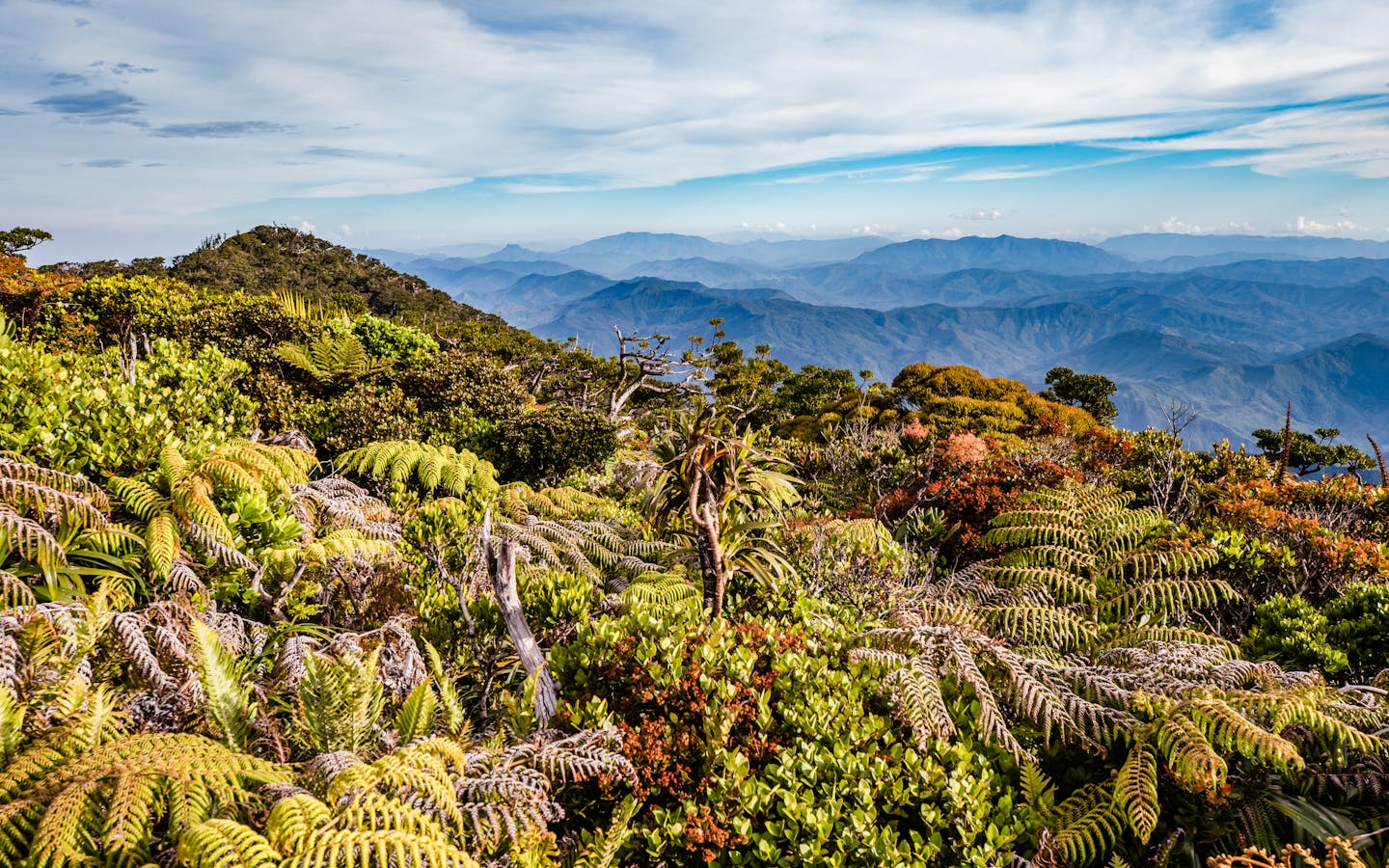
Hawaii’s largest and longest-serving airline is committed to mālama (care for) the global environment. Hawaiian Airlines guests can balance out the emissions of their flight through Conservation International’s high-quality, independently verified carbon offsets.
How it works
Confronting climate change requires reducing carbon emissions. By helping to protect forests that absorb carbon from the atmosphere, you can reduce the emissions of your flight. Protecting forests and other natural ecosystems is one of the fastest and most effective ways to curb global climate change. Each credit represents a reduction of 1 metric ton in greenhouse gas emissions.
Hawaiian Airlines’ offsets support projects like the Chyulu Hills REDD+ project in southeast Kenya, which has helped conserve and restore 404,000 hectares (1 million acres) of land, preventing the release of around 37 million metric tons of carbon emissions.

Our partnership

A partnership of shared values
As Hawaii’s hometown carrier since 1929, Hawaiian Airlines is dedicated to caring for the natural resources that sustain Hawai‘i. Its ideals align with Conservation International, which has helped protect land and sea across more than 70 countries. Conservation International has a positive presence in Hawai‘i, too, dedicated to ocean conservation and local sustainable seafood. As trusted organizations with shared values of mālama for the Earth, this partnership was a natural fit.
An invitation to Travel Pono
Hawaiian Airlines connects people with aloha, encouraging guests to experience Hawai‘i safely and respectfully. Travel Pono means exploring with care — offering your kōkua (help) to preserve the islands’ natural resources, cultures and communities. It means traveling responsibly while gaining a deeper connection to the islands. Every guest flying to Hawai‘i will watch an in-flight video about Travel Pono that offers more details.
Travel Pono means to explore with care, offering your kōkua (help) to preserve our natural resources, cultures and communities. It’s recognizing your responsibility while gaining a deeper connection to Hawaii. Do your part to Travel Pono as you go from ‘āina (land) to kai (sea) in Hawaii. To learn more tips on what to know about visiting Hawai‘i, visit https://on.hwnair.com/3tF3mf7.
Frequently Asked Questions
What is carbon offsetting and how can I offset my emissions?
Carbon offsets are aimed at neutralizing greenhouse gas emissions that result from the use of fossil fuels by reducing emissions from another source. Through this process, Hawaiian Airlines customers can offset the carbon emissions resulting from their travel by making charitable contributions to independently certified environmental projects that protect forests.
What are carbon credits?
A carbon credit represents a reduction of one metric ton in greenhouse gas emissions to compensate for emissions made somewhere else. Credits are traceable, tradable and finite: When they are purchased, they are retired forever. This revenue funds activities that protect or restore forests, often supporting local communities with alternative livelihood opportunities that keep trees standing, and it helps fund programs to do so in perpetuity.
How do these offsets work?
The idea is that companies or individuals dedicated to taking climate action can buy and trade credits — each representing a metric ton of carbon — to supplement other actions they are taking to reduce their emissions. Revenues are paid to local communities as an incentive to protect forests on their lands. The result: Forests remain standing and absorb more climate-warming carbon from the atmosphere while supporting local livelihoods — and buyers neutralize a portion of their carbon footprint.
Why are forest-carbon offsets important?
The world’s forests store more carbon than is in the entire atmosphere. Yet deforestation is the second-leading cause of climate change, contributing 11 percent of global greenhouse gas emissions — more than all passenger cars combined.
Protecting forests and other natural ecosystems is one of the fastest and most effective ways to curb climate change. That’s why Conservation International is working to save critical forests around the world. By investing in forest offsets, you help to protect forests from being cleared, while supporting critical habitat for threatened species and the communities that care for and depend on forests.
Where will my donation go?
Once you book your flight, you can calculate the carbon footprint of your travel using our custom carbon calculator. Then, you donate the corresponding amount necessary to offset those emissions. Your donation will be used to retire verified carbon offsets through one of Conservation International’s carbon reduction projects. These funds are used to protect forests, empower local communities and conserve critical wildlife. Learn more about these projects.
How do we calculate the footprint of your flights?
Our carbon calculator takes the average fuel consumption of each Hawaiian Airline flight, accounts for how much of the fuel burn was passenger-related (passenger-to-weight ratio) and divides by the average number of people on that leg (passenger load factor). The carbon footprints of shorter intra-island legs on Hawaiian Airlines were increased slightly to meet the minimum transaction of USD $1.
Does Hawaiian Airlines have other sustainability initiatives?
Please visit Hawaiian Airlines Environmental Stewardship page to learn more about their initiatives. If you have any questions, please feel free to reach out to news@hawaiianairlines.com.

